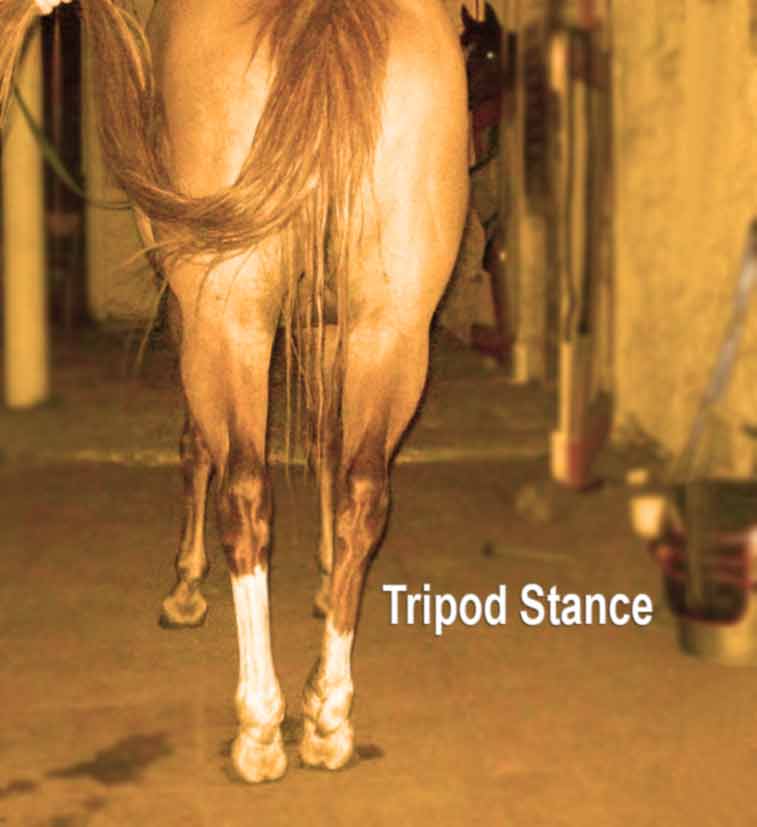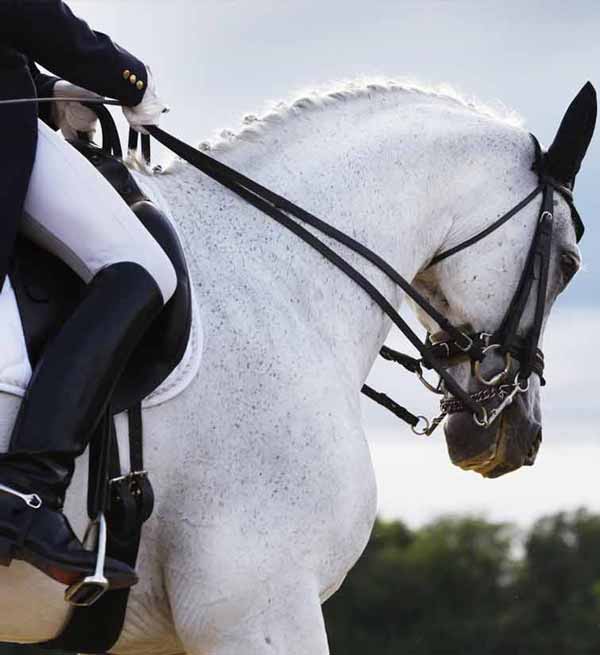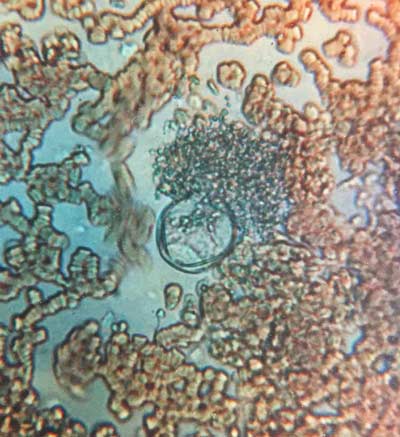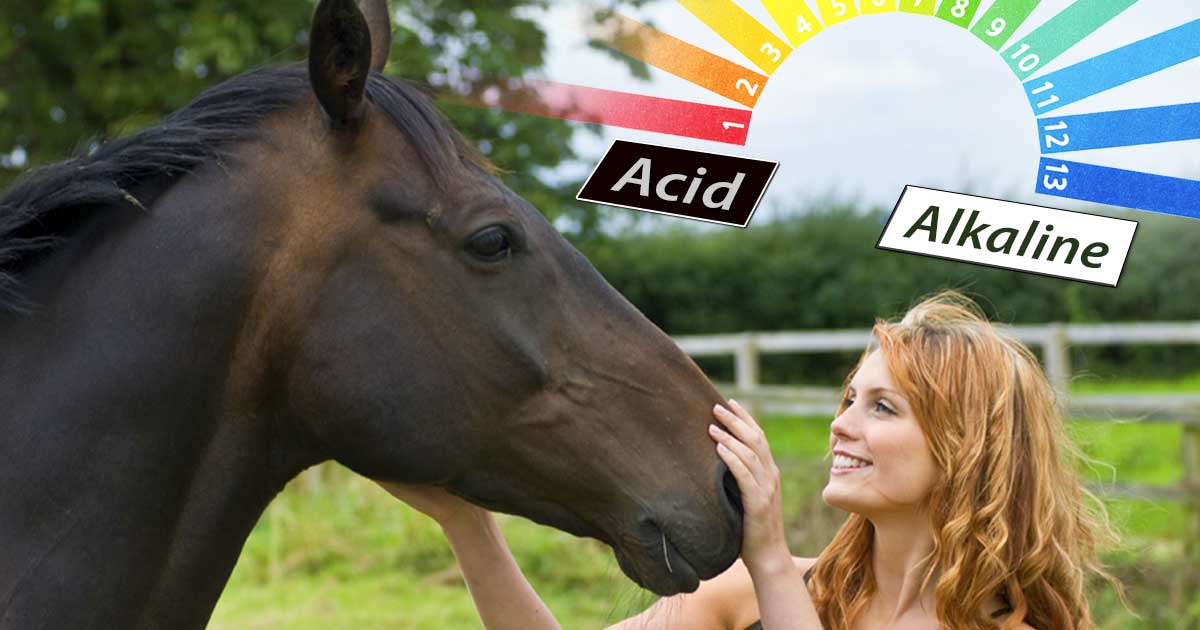Weak Hind End in Horses

When a horse suffers from a weak hind end, thier strength and co-ordination are compromised. Depending on which rear leg is most affected, the horse will shift its weight to the opposite diagonal front leg in order to maintain balance, as it takes a minimum of three points on a plane to be stable. Think of a table or chair with one leg shorter than the rest. You can rock the table from one diagonal leg to the next, and three legs will always be on the ground. Just the same, horses with a weak hind leg will compensate by shifting more weight onto the opposite front leg - thereby stressing that front leg far more than usual. This front leg will often show lameness or tendon problems and often that hoof will be a flatter slew-like hoof and the other front hoof will be more erect and clubby.
Racing, jumping, eventing and dressage demand a lot from the hind end of a horse. Weakness in the hind will limit performance and can also be dangerous to the rider if a horse goes down.
We have found in cases of excessive intestinal permeability (or ‘Leaky Gut Syndrome’), the first affected hind leg is most often the right rear - possibly because the cecum lies on the right side and has the thinnest walls within the digestive tract, making it the most susceptible. If the problem is not corrected (via change in nutrition, cleaner water and/or elimination of chemical exposures), the condition will progress to both hind legs over time.
A horse may stomp its hind legs as they hit the ground - for instance while casually walking down an aisle or fence line - trying to feel the ground, as the condition causes a type of numbness rather than pain. You can hear the difference in footfalls as they walk down a cement aisle - and it can appear the horse has a hard time sensing where the ground is in relationship to its hoof.
If a condition involving a weak hind end is allowed to progress, a horse can develop stringhalt or hiking of one or both hind legs. This has been shown to be best corrected with Nutrient Buffer® HG, Nutrient Buffer® liquid, and an Equine Plus® Feed protocol.
It does NOT have to be the end of the world when you see neurological symptoms originating from the hind end.




